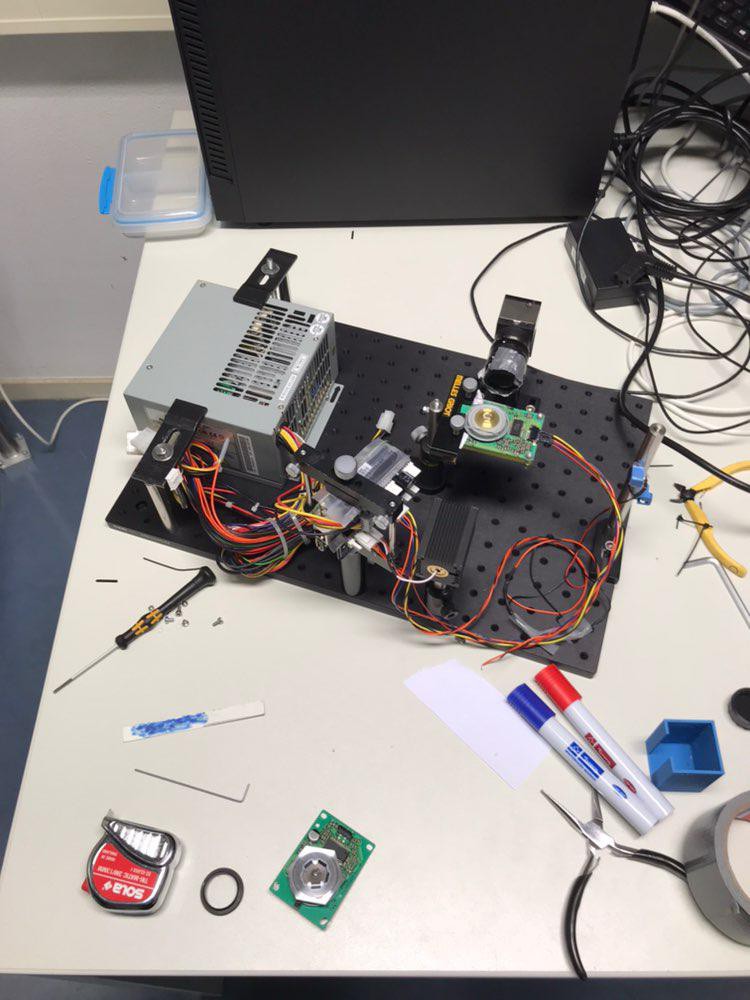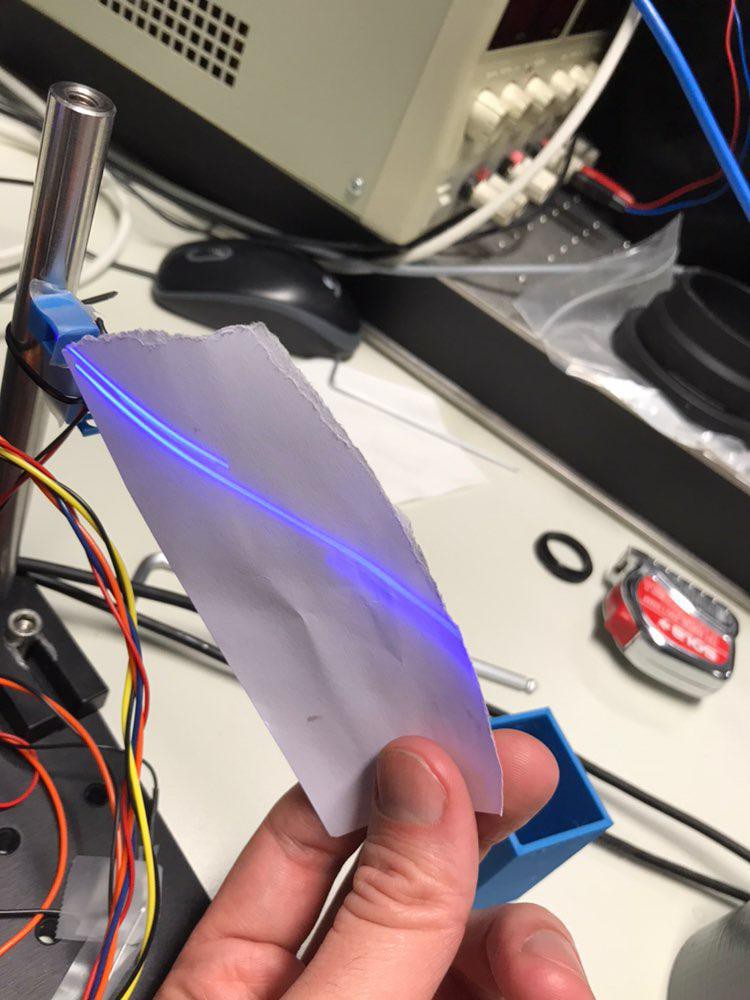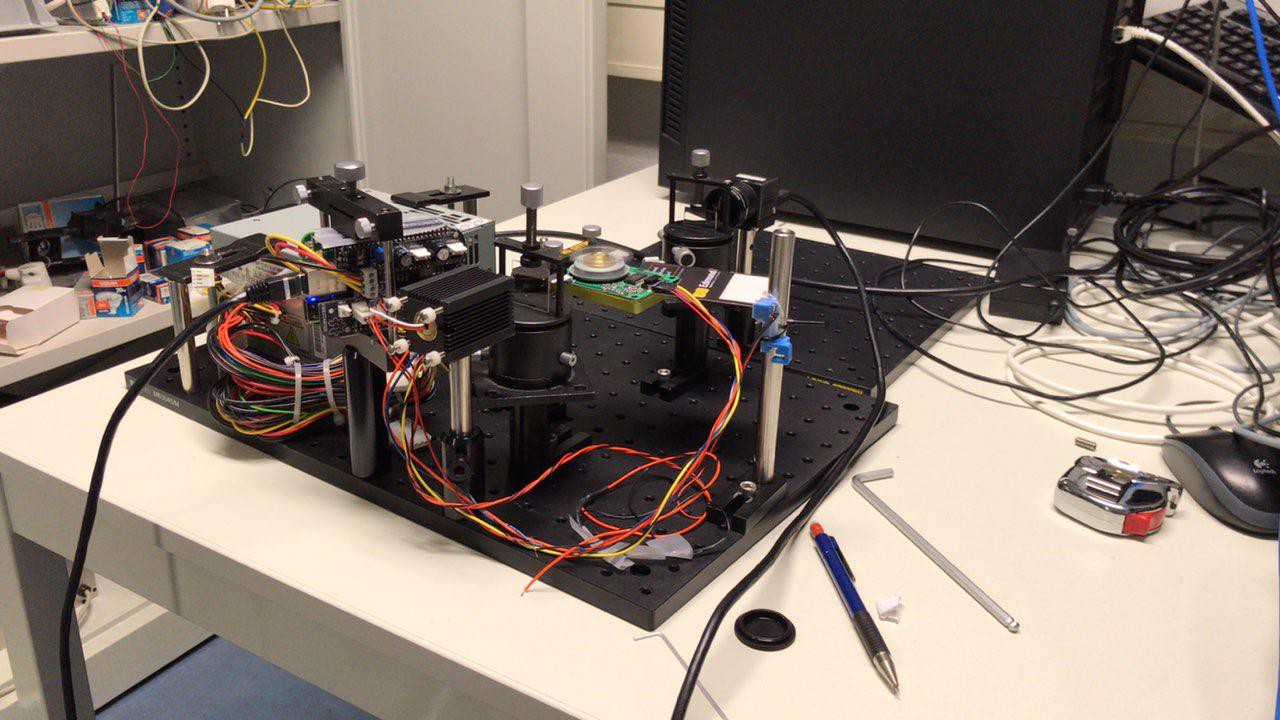As stated earlier, I did a test where I added two cylinder planoconvex lenses; one with 250 mm and the other with 75 mm focal length. The spot was 40 micrometers in diameter and circular. The cross-scan-error is reduced but not removed. The line width is 140 micrometers.
Hereafter I removed the lenses and focused the laser directly with the aspheric lens right after the polygon. The distance to facet of the camera chip was in the order of 30 mm. The line is then 260 micrometers wide.
As I did not have short focal length cylinder lenses in stock, I proceeded with a 25 mm and a 8 mm camera lens and measured the vertical component of a by the lens focused coli-mated bundle. The line width was 101 micrometers and 73.6 micrometers.
Combing all the results;
the apsherical lens pair reduces the cross scan error
the apsherical lens pair improves the spot; more circular and better quality
the focal length of the second aspherical lens has to be as short as possible
A short focal length would require that the polygon is oriented vertically. The path is not long enough for a mirror. I did a test and the polygon seems to operate fine vertically and even upside facing down.
Furthermore, I measured how planar the prism is. The prism is planar within 5 micrometers.
Still there seem to be significant offsets. I therefore assume that when the air bearing gets into balance; it achieves an equilibrium where the polygon is tilted. This seems to be filtered out by the second asherical lens. An other source for error is the 5 arc minute tolerance on parallel opposing faces.
This is not removed by the cylindrical lens and that is why its focal length has to be kept as short as possible.
Pictures:
Camera with lens imaging a colimated bundle.
S
Lines visible further away from the prism of the invidual facets.

Setup with cylinders.

 Hexastorm
Hexastorm
Discussions
Become a Hackaday.io Member
Create an account to leave a comment. Already have an account? Log In.